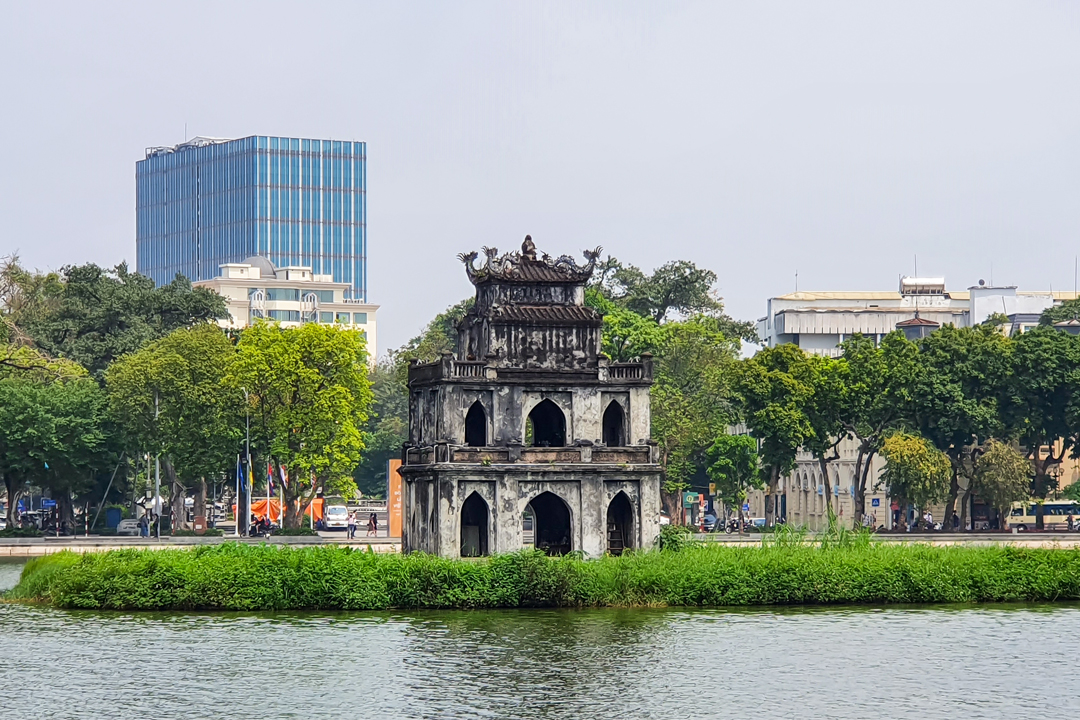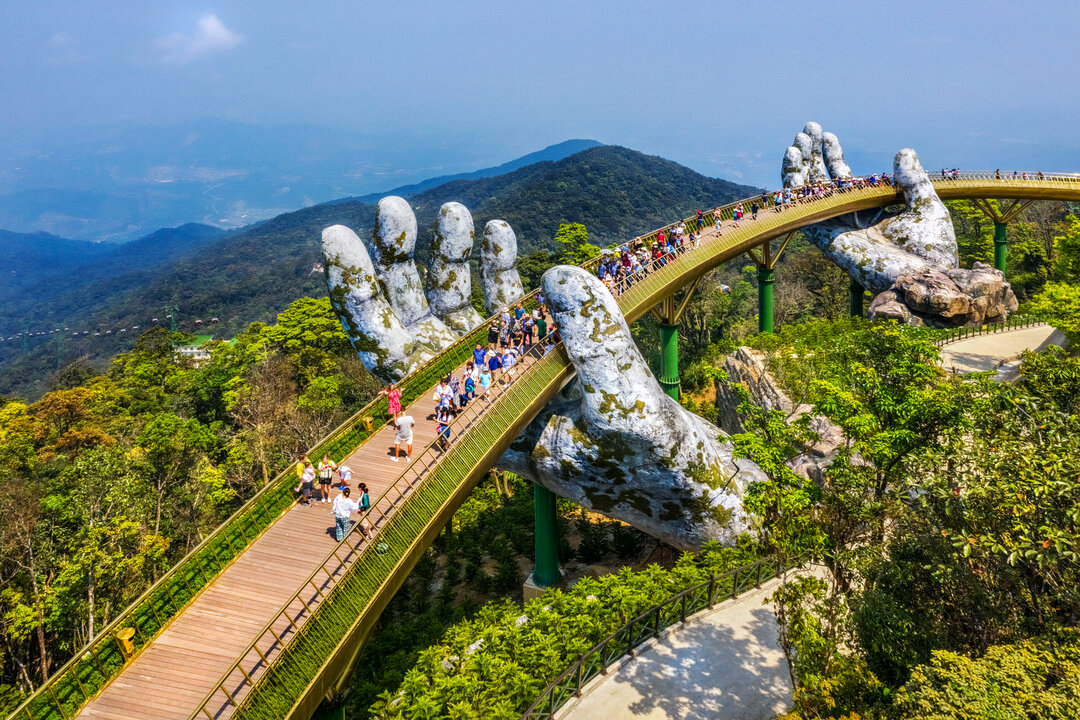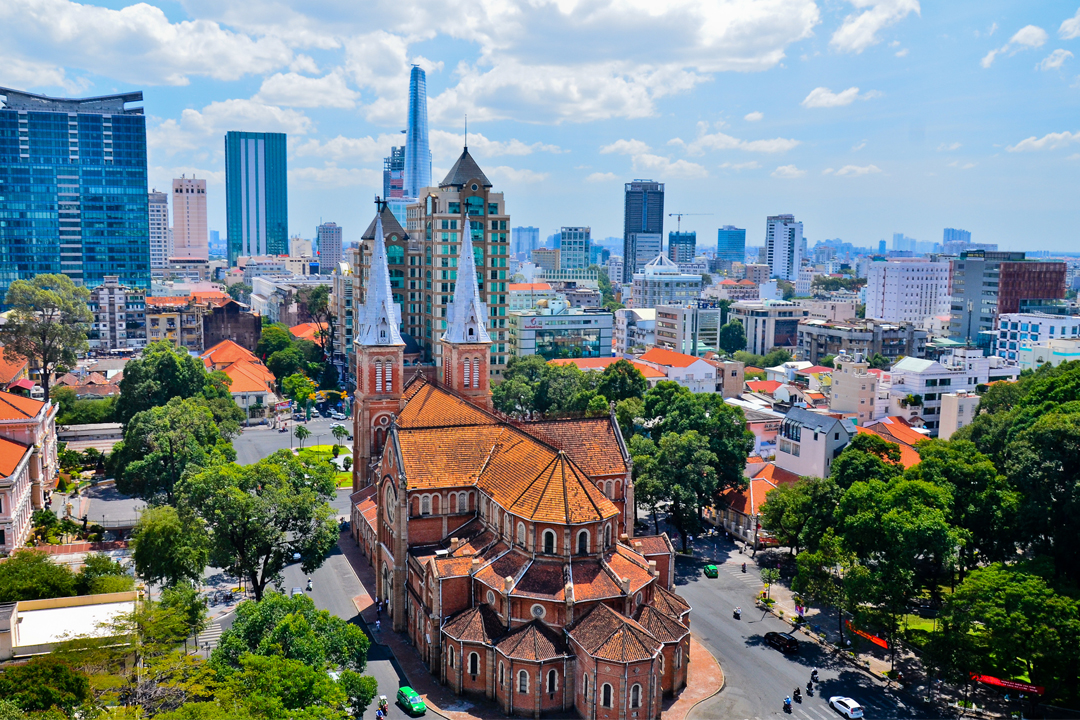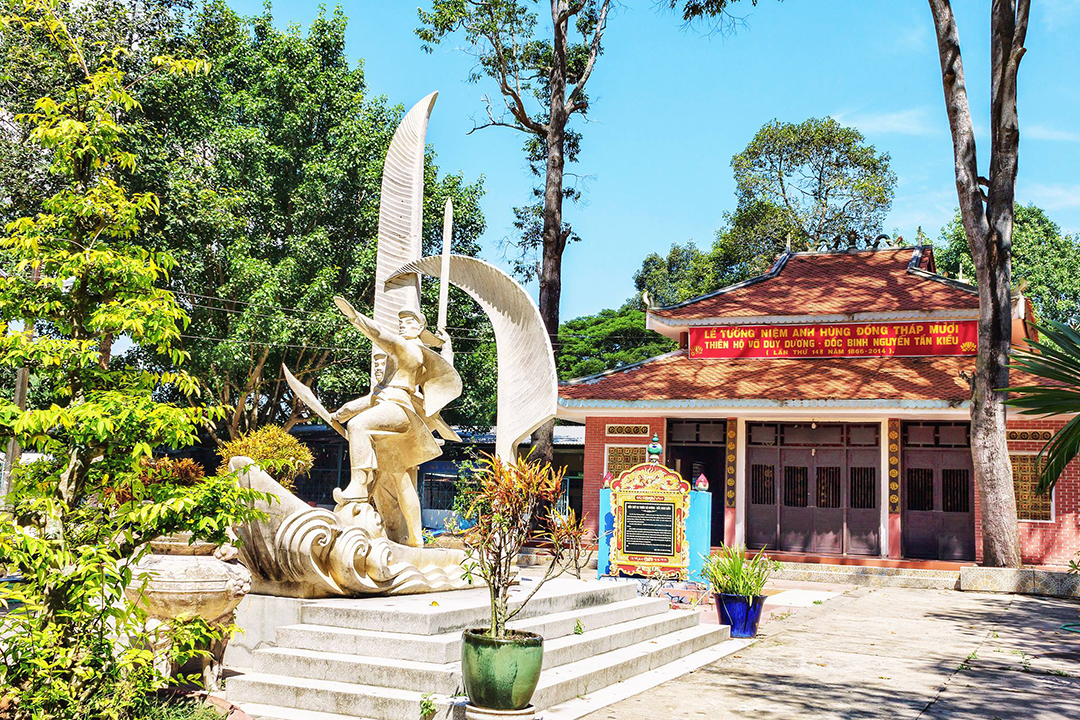Discover Marble Mountains: Location, History, Best Time & Travel Guide
Marble Mountains is a mesmerizing cluster of five limestone and marble hills that hold deep cultural, historical, and spiritual significance. This destination is a breathtaking natural wonder and a revered site for Buddhism, featuring ancient pagodas, mysterious caves, and panoramic viewpoints.
In this guide, you'll discover everything about where the Marble Mountains are located, its historical significance, and the best time to plan your visit. If you're curious about how to get to Marble Mountains from Da Nang or looking for information on entrance fees and opening hours, this article provides all the essential details.
Beyond logistics, we will explore the must-try experiences, hiking trails that lead and stunning viewpoints overlooking Da Nang’s coastline to spiritual landmarks. Adventure seekers can delve into Am Phu Cave & Huyen Khong Cave, known for their mystical ambience and religious carvings. Those interested in local craftsmanship will find the Non Nuoc Museum fascinating, showcasing intricate stone sculptures crafted by generations of artisans.
This guide also answers frequently asked questions about Marble Mountains, such as how long a visit should take. It is suitable for children, and what to wear for an optimal experience. Additionally, you can explore nearby attractions like the iconic Dragon Bridge, featuring a stunning fire-breathing show, it’s a must-see in any Da Nang itinerary.
Where are the Marble Mountains located?
Marble Mountains is a famous natural and cultural landmark in Da Nang, consisting of 5 distinct limestone and marble hills. The mountains are located at 81 Huyen Tran Cong Chua, Hoa Hai Ward, Ngu Hanh Son District, Da Nang City, just 8 kilometers southeast of Da Nang city center. This strategic location makes it a convenient stop for travelers exploring central Vietnam, as it sits between Hoi An and Da Nang International Airport.
Each of the five mountains represents one of the five elements in Eastern philosophy: Kim (Metal), Moc (Wood), Thuy (Water), Hoa (Fire), and Tho (Earth). The most famous among them is Thuy Son (Water Mountain), where you can explore ancient caves, Buddhist pagodas, and scenic viewpoints overlooking the coastline. Due to its spiritual significance and breathtaking landscapes, the site attracts both pilgrims and adventure seekers.
Marble Mountains is also close to other Da Nang tourist attractions, making it an essential stop on many Vietnam travel itineraries. Travelers often combine their visits with nearby sites like My Khe Beach, Linh Ung Pagoda, and the bustling Han Market. Additionally, it is just a short distance from the Dragon Bridge, an iconic landmark known for its fire-breathing dragon performances on weekends.
The history and spiritual significance of Marble Mountains date back centuries, with influences from both Vietnamese Buddhism and Cham culture. Exploring these mountains offers panoramic views of Da Nang and a glimpse into Vietnam’s rich cultural heritage. To understand the deeper historical and spiritual connections of this landmark, let's explore the history of the Marble Mountains in the next section.
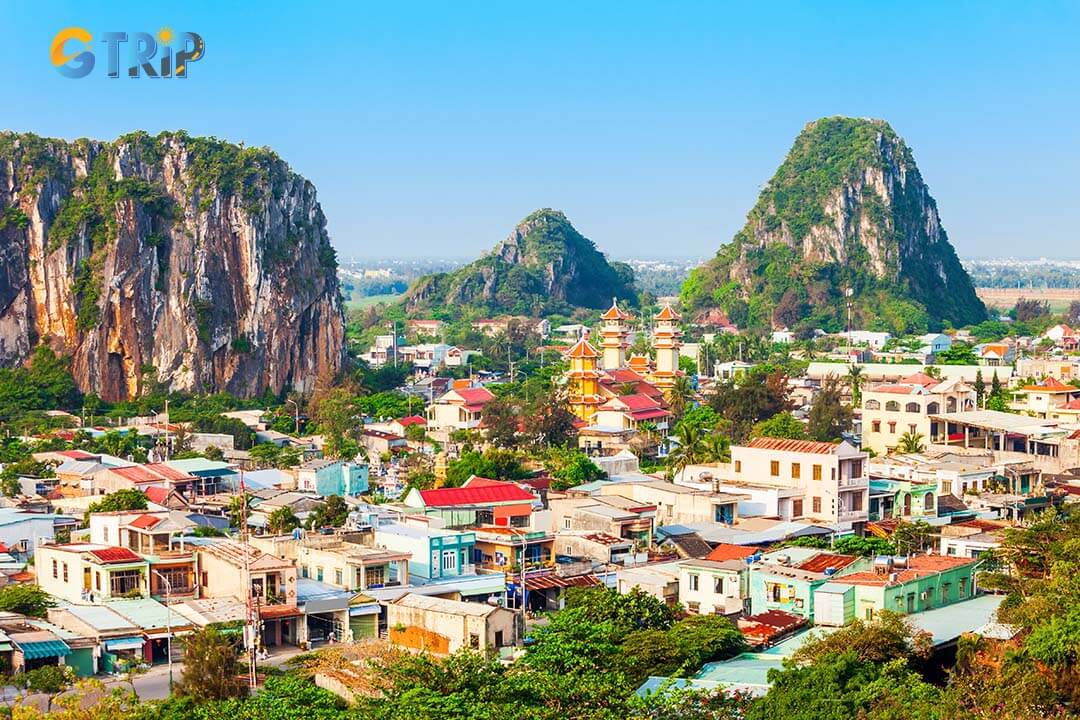
Marble Mountains, a renowned natural and cultural site in Da Nang, features five limestone and marble hills symbolizing the five elements of Eastern philosophy
History of Marble Mountains
Marble Mountains hold a deep historical and spiritual significance, dating back centuries. This natural wonder, consisting of five distinct limestone and marble hills, has been closely tied to Buddhism, Vietnamese folklore, and Cham influences. Emperor Gia Long named it "Ngu Hanh Son" (Five Elements Mountains) in the early 19th century. The name represents the five essential elements in Eastern philosophy: metal, wood, water, fire, and earth. These elements are believed to represent the balance of life, making the site a revered spiritual destination.
The Buddhist significance of the Marble Mountains is evident through the numerous ancient pagodas, shrines, and caves scattered throughout the area. Temples like Linh Ung Pagoda and Tam Thai Pagoda have served as places of worship and meditation for centuries, drawing monks and devotees seeking spiritual enlightenment. Some of the caves, such as Huyen Khong Cave, were used as secret meeting places for Buddhist monks during times of conflict. The presence of intricate Buddha statues and altars within these caves showcases the deep-rooted connection between the Marble Mountains and Buddhism.
Beyond its Buddhist heritage, the site also reflects Cham cultural influences. The Cham people, who once ruled central Vietnam, considered these mountains sacred. Cave carvings and artefacts indicate the Cham civilization's early religious use of the area. This blend of Cham and Vietnamese spiritual traditions makes the Marble Mountains a unique cultural intersection.
During the Vietnam War, the caves within the Marble Mountains played a strategic role. They served as a hiding place and hospital for Vietnamese soldiers, providing a natural defence against enemy forces. The combination of historical, religious, and wartime significance has cemented the mountains as a symbol of resilience and cultural heritage.
Today, the Marble Mountains continue to be an important landmark, attracting you to explore its sacred temples, historic caves, and panoramic views. To fully experience this destination, it’s essential to consider the best time to visit the Marble Mountains, ensuring a comfortable and enriching journey.
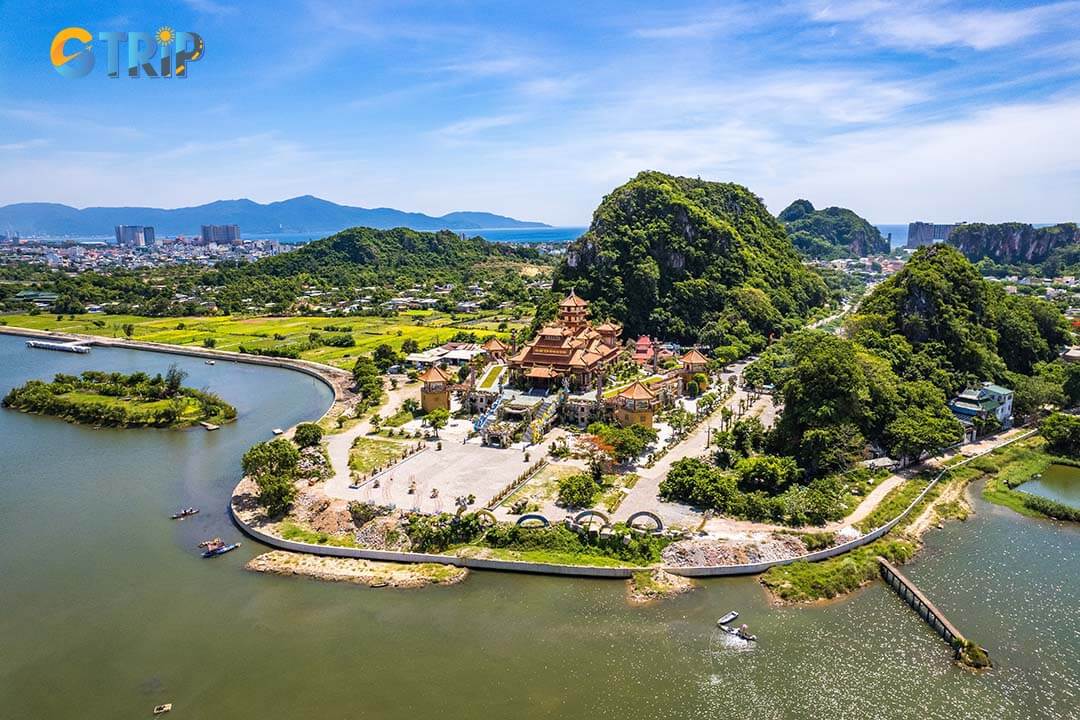
Marble Mountains hold deep historical, spiritual, and cultural significance, reflecting Buddhist traditions, Cham influences, and wartime history
The best time to visit Marble Mountains
The best time to visit Marble Mountains is from February to August when Da Nang weather is at its most favorable. During this period, the region experiences dry conditions, warm temperatures ranging from 25 - 35°C, and clear skies, making it ideal for outdoor activities. Minimal rainfall allows you to explore caves, hike trails, and enjoy peak views without weather concerns.
From February to April, temperatures remain moderate with cool breezes, creating a comfortable environment for sightseeing. This is also the time when the Quan The Am Festival takes place at Quan The Am Pagoda, a significant cultural and spiritual event that attracts many visitors. May to August brings more sunshine and longer daylight hours, which is perfect for photography and extended exploration. However, midday temperatures can rise significantly, so early morning or late afternoon visits are recommended to avoid the peak heat.
While the dry season is ideal, visitors should be mindful of occasional heat waves in June and July, which can make climbing and hiking more exhausting. You should wear breathable clothing, carry sufficient water, and take breaks in shaded areas will enhance the experience. The rainy season from September to January can bring heavy showers and slippery trails, making it less suitable for hiking or sightseeing.
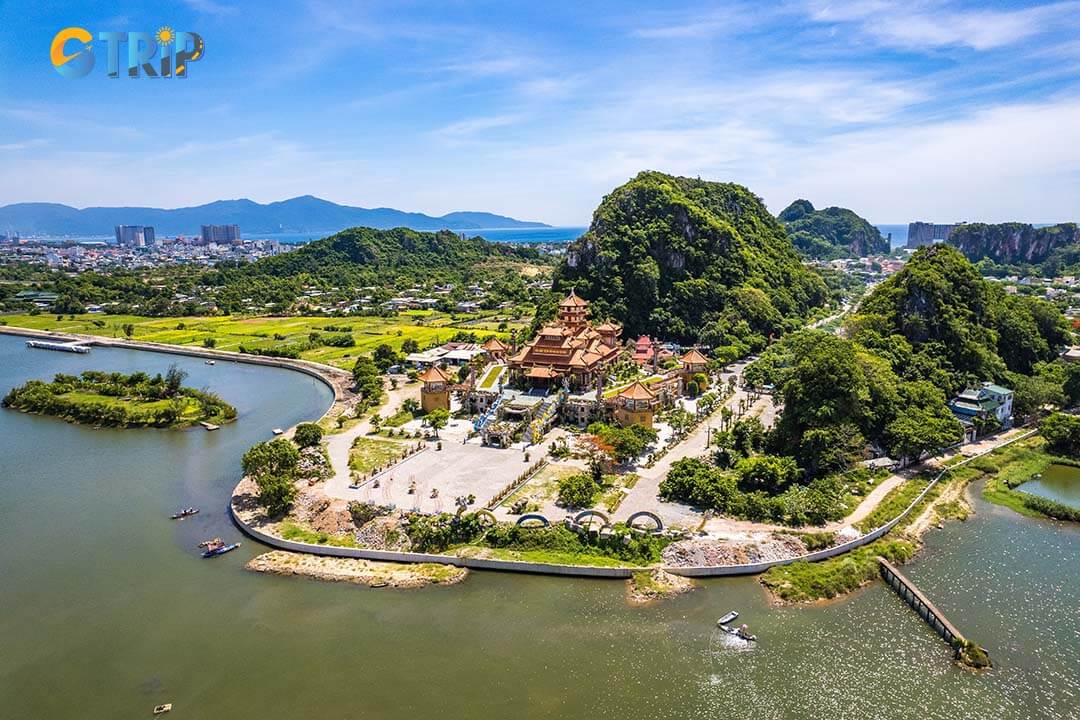
From February to August is the best time to visit Marble Mountains
For a hassle-free experience, understanding transportation options from Da Nang is essential. With various choices available, you can easily find a convenient and budget-friendly way to reach the Marble Mountains, ensuring a smooth and memorable journey.
How to get to the Marble Mountains from Da Nang?
Marble Mountains transportation options provide you with multiple ways to travel from Da Nang or Hoi An, depending on budget and convenience. Located just 8 km from Da Nang City centre, this famous attraction is easily accessible via motorbike, taxi, private car, or guided tour. Each option offers a different level of flexibility, cost, and comfort, catering to various travel preferences.
1. Traveling by motorbike
Renting a motorbike is a popular choice for independent travelers who want to explore at their own pace. The ride to Marble Mountains takes approximately 10-15 minutes depending on where tourists stay, following Vo Nguyen Giap Street along the coastline. Motorbike rental prices range from 100,000 - 150,000 VND per day, making it a cost-effective option. Parking is available near the entrance for 5,000 VND. However, you should be cautious of traffic rules and ensure they wear helmets to comply with local regulations.

Renting a motorbike offers a flexible and affordable way to reach Marble Mountains, with a scenic 10 - 15 minute ride along the coastline
2. Taking a taxi or ride-hailing service
For those seeking a comfortable and hassle-free journey, taxis and ride-hailing services like Grab or Be are widely available in Da Nang. The fare for a one-way trip from Da Nang to the Marble Mountains typically ranges from 100,000 - 150,000 VND, depending on the starting location and time of day. This option is ideal for families or groups who prefer direct and air-conditioned transport without the need for navigation.
3. Private car
Hiring a private car with a driver provides the most comfortable experience, especially for families or larger groups. Prices range from 500,000 - 800,000 VND for a round-trip, with drivers often waiting while visitors explore. This option also allows for additional stops at nearby attractions, such as Son Tra Peninsula or My Khe Beach, making it a great choice for an extended sightseeing experience.
4. Joining a guided tour
For those who prefer a well-organized itinerary, booking a Marble Mountains tour from Hoi An or Da Nang is a fantastic option. Tours usually include round-trip transportation, an English-speaking guide, and visits to significant Buddhist sites and caves. Prices vary depending on inclusions but expect to pay around 400,000 - 700,000 VND per person. This option provides in-depth historical and cultural insights that self-guided you might miss.
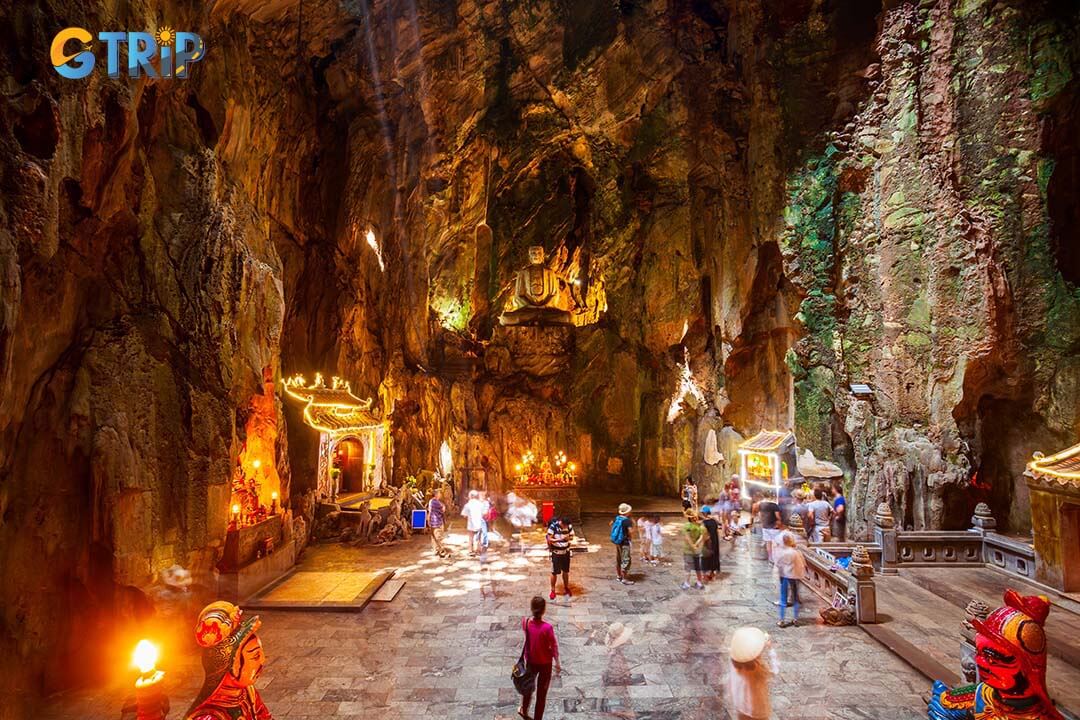
Guided tours from Hoi An or Da Nang offer a hassle-free way to explore Marble Mountains with transport, a guide, and cultural insights
Knowing the Marble Mountains entrance fees and opening hours in the next section ensures a smooth and well-prepared visit. It’s allowing you to make the most of your time exploring this remarkable destination.
Entrance fees and opening hours of Marble Mountains
The Marble Mountains entrance fee is an essential consideration for visitors planning to explore this iconic attraction. The general admission fee is affordable, making it accessible to both budget travellers and those looking for an immersive experience. Additional costs apply to specific sites within the complex, such as caves, temples, and panoramic viewpoints.
Entrance fees breakdown:
- General admission: 40,000 VND per person
- Elevator to Water Mountain: 15,000 VND per person per trip
While the stairs leading up Water Mountain provide a more adventurous route, the elevator is a convenient option for those who prefer a less strenuous ascent. The ticket price ensures access to various pagodas, caves, and viewpoints, making it a valuable investment for an enriching experience.
Opening hours of Marble Mountains
The site welcomes visitors from 7:00 a.m. to 5:30 p.m. daily, allowing ample time to explore its religious landmarks and breathtaking landscapes. Arriving early in the morning ensures a quieter experience with cooler weather, while late afternoon visits offer stunning sunset views over Da Nang.
Given its popularity, Marble Mountains can be crowded during peak hours. Travelers seeking a more serene visit should plan accordingly, avoiding weekends and national holidays. Exploring in the early hours also enhances the spiritual ambiance, especially at Linh Ung Pagoda and Tam Thai Pagoda, where monks and devotees perform daily rituals.
Understanding the entrance fees and opening hours helps visitors plan their itinerary efficiently. Once inside, the real adventure begins, from hiking up scenic trails to discovering the mysterious depths of caves. For a blend of history and outdoor adventure, the next section explores the top activities at Marble Mountains.
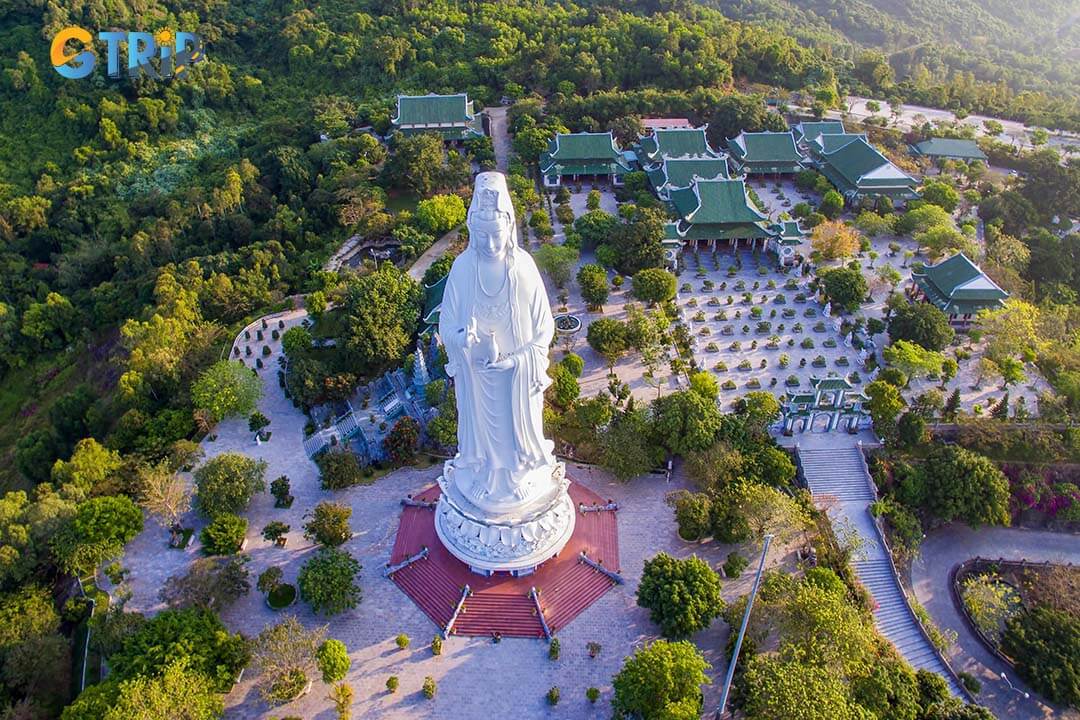
Marble Mountains is open daily from 7:00 a.m. to 5:30 p.m., with early visits offering a peaceful experience and late afternoons providing stunning sunset views
4 things to do in Marble Mountains
Marble Mountains Da Nang is a captivating destination filled with cultural, spiritual, and adventurous experiences. You can explore sacred pagodas, discover hidden caves, admire breathtaking viewpoints, and learn about traditional stone sculpture craftsmanship.
1. Exploring the five Marble Mountains
Marble Mountains is a cluster of five distinct limestone and marble hills, each named after one of the five natural elements in Vietnamese philosophy: Kim (Metal), Moc (Wood), Thuy (Water), Hoa (Fire), and Tho (Earth). Each mountain has its unique characteristics, spiritual significance, and hidden caves, making them a fascinating destination for visitors.
- Thuy Son (Water Mountain) - The largest and most famous of the five, Thuy Son is the main attraction, featuring Linh Ung Pagoda, Tam Thai Pagoda, and Huyen Khong Cave. The mountain offers breathtaking panoramic views of Da Nang from its peak, accessible via a series of stone steps or an elevator.
- Moc Son (Wood Mountain) - Unlike the others, Moc Son is relatively untouched, with fewer structures and caves. It is known for the unique white marble rock formation called Co Mu, which resembles a sitting woman and is considered sacred.
- Hoa Son (Fire Mountain) - Divided into two peaks, Duong Hoa Son and Am Hoa Son, this mountain is home to ancient Buddhist temples and a network of caves, some of which were used as hiding places during wartime.
- Kim Son (Metal Mountain) - This mountain is famous for Quan The Am Pagoda, an important religious site that hosts an annual Buddhist festival. The caves within Kim Son contain intricate stalactites and spiritual altars.
- Tho Son (Earth Mountain) - The smallest of the five, Tho Son has a network of narrow caves that once served as a secret refuge for soldiers during wartime.
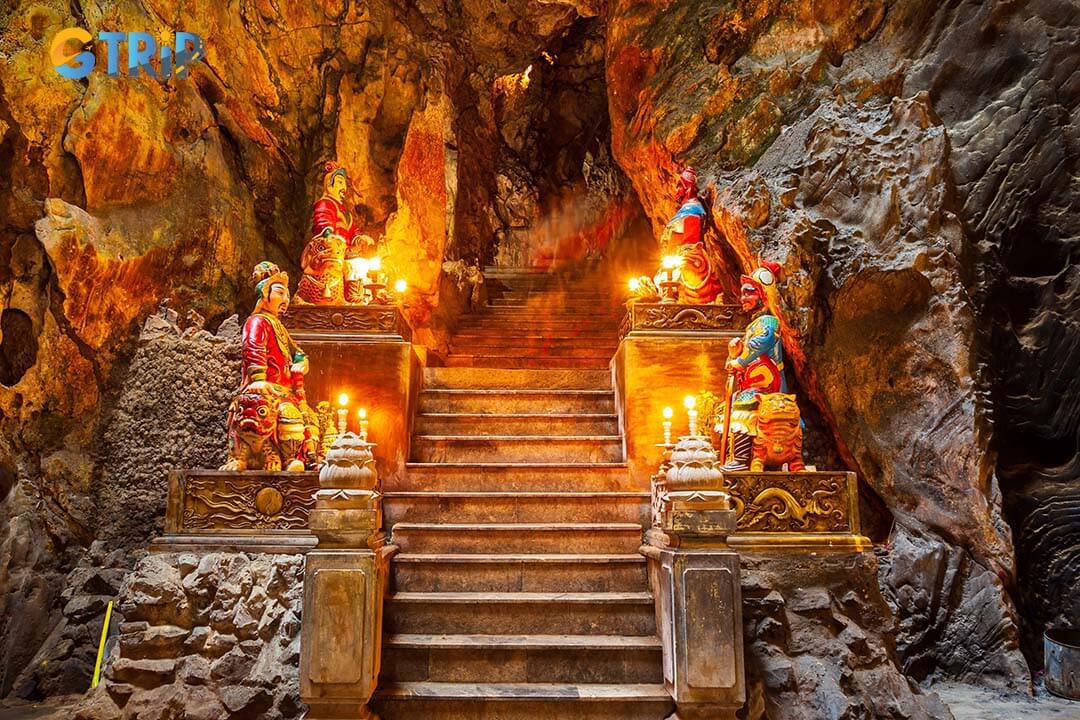
Marble Mountains is a group of five limestone and marble hills, each representing a natural element in Vietnamese philosophy, with unique caves and spiritual landmarks
Unlike the other mountains, it has a relatively flat surface, making it easier to explore. This unique terrain allows visitors to walk comfortably while enjoying the surrounding scenery.
2. Discovering Am Phu Cave & Huyen Khong Cave
Am Phu Cave, also known as the "Cave of Hell", offers an intriguing journey through Buddhist depictions of the afterlife. With dimly lit pathways, eerie sculptures, and symbolic representations of karma and rebirth, it provides a thought-provoking experience. In contrast, Huyen Khong Cave is a tranquil and mystical space where sunlight filters through natural openings, creating an ethereal atmosphere. The cave houses ancient Buddhist shrines and is often visited for meditation and spiritual reflection.
3. Learn spirituality at Linh Ung Pagoda & Tam Thai Pagoda
Among the many religious sites in the Marble Mountains, Linh Ung Pagoda and Tam Thai Pagoda stand out as sacred places for prayer and cultural discovery. Linh Ung Pagoda features intricate architecture and a serene courtyard where you can witness locals paying their respects. Tam Thai Pagoda, dating back to the 17th century, is one of the oldest pagodas in the region, reflecting the deep-rooted Buddhist traditions of Vietnam. These sites offer a glimpse into the country’s spiritual heritage.

Linh Ung Pagoda showcases intricate architecture and a tranquil courtyard where visitors can observe locals honoring their traditions
4. Learn about stone sculpture at Non Nuoc Museum
For those interested in traditional Vietnamese craftsmanship, you should visit the Non Nuoc Museum. This museum showcases the artistry of the renowned Non Nuoc stone carving village, where generations of artisans have honed their skills in sculpting intricate statues and religious figures from marble. You can watch skilled craftsmen at work and even purchase beautifully handcrafted souvenirs that embody the region’s rich artistic heritage.
Beyond these fascinating experiences, Marble Mountains also serves as a gateway to some of Da Nang’s best hiking trails and viewpoints. It’s offering adventure seekers an opportunity to enjoy breathtaking landscapes while exploring this cultural landmark.
Hiking trails and viewpoints in Marble Mountains
Marble Mountains hiking trails offer an exhilarating blend of adventure and breathtaking scenery, making them a must-visit for outdoor enthusiasts. The trails weave through lush landscapes, ancient pagodas, and hidden caves, leading to spectacular viewpoints. That provide panoramic vistas of Da Nang’s coastline, Son Tra Peninsula, and Non Nuoc Beach.
Hiking routes and difficulty levels
- Thuy Son Trail (Water Mountain) - The most popular and accessible route, this trail consists of a well-paved staircase leading to key attractions like Tam Thai Pagoda, Linh Ung Pagoda, and Huyen Khong Cave. The ascent takes around 15 - 20 minutes, making it suitable for most visitors. At the peak, hikers are rewarded with a 360-degree view of Da Nang, perfect for photography.
- Am Phu Cave Trail - A more adventurous and eerie hike, this trail descends into Am Phu Cave, known for its dramatic Buddhist sculptures depicting heaven and hell. With its dimly lit passageways and winding paths, this route is best suited for those looking for a unique blend of history and mysticism.
- Tam Thai Peak Route - A short but steep trail leading to one of the highest points in Marble Mountains, offering a bird’s-eye view of Non Nuoc Beach. The stone steps here are uneven, so sturdy footwear is recommended.
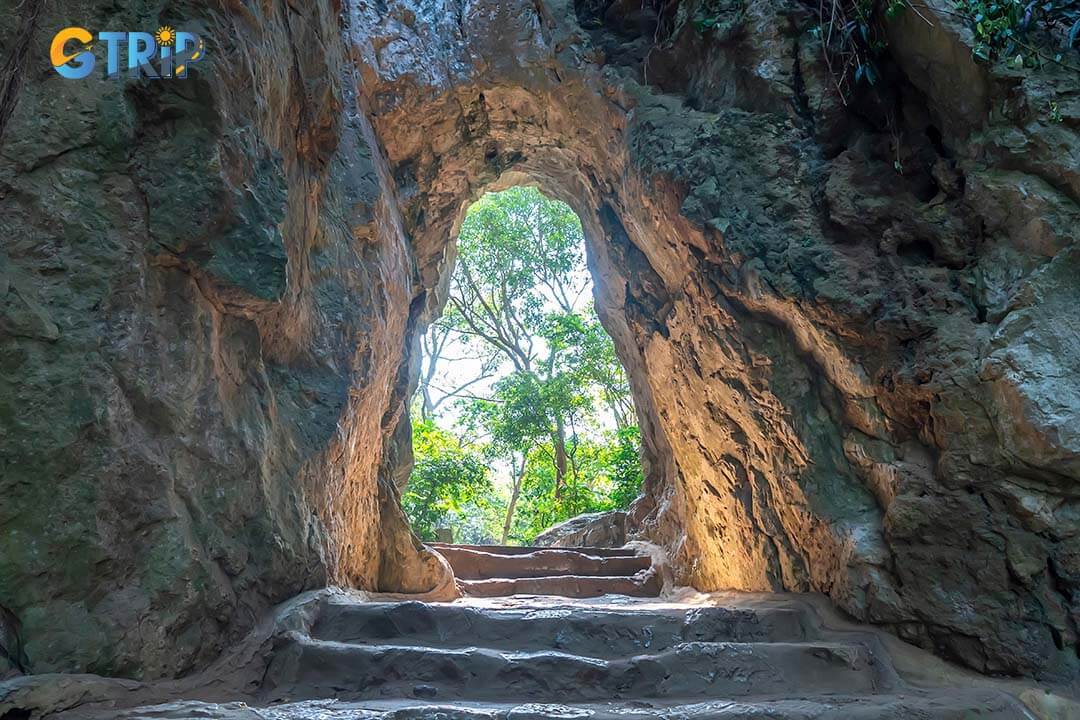
Marble Mountains features diverse trails, from the scenic Thuy Son Trail to the eerie Am Phu Cave and the challenging Tam Thai Peak
Best viewpoints for panoramic photography
- Xa Loi Tower Viewpoint - Located near Linh Ung Pagoda, this viewpoint provides an expansive view of Da Nang’s skyline, especially stunning at sunset.
- Heaven’s Gate Viewpoint - One of the most sought-after spots, this viewpoint at the peak of Thuy Son showcases a mesmerizing coastal panorama, making it an ideal location for photographers.
- Non Nuoc Beach Viewpoint - Overlooking the pristine coastline, this viewpoint captures the contrast between the lush mountains and the azure waters of the East Sea.

Non Nuoc Beach, each providing breathtaking panoramas of Da Nang and the coastline.
For those seeking a mix of culture, adventure, and nature, hiking through the Marble Mountains offers an unforgettable experience. After exploring the trails, visitors can delve deeper into the region’s spirituality by discovering Am Phu Cave & Huyen Khong Cave, where ancient legends and Buddhist symbolism intertwine within breathtaking underground chambers.
FAQ about Marble Mountains
Marble Mountains is a captivating destination in Da Nang, known for its rich history, spiritual landmarks, and breathtaking landscapes. If you're interested in exploring ancient caves, visiting sacred pagodas, or hiking to scenic viewpoints, this site offers a perfect mix of culture and adventure.
How long should I spend at Marble Mountains?
A typical visit to the Marble Mountains lasts about 2-3 hours, depending on how much you want to explore. If you plan to visit Am Phu Cave, Huyen Khong Cave, and multiple Buddhist pagodas, you may need more time. Hikers aiming for the highest viewpoints should allocate extra minutes for climbing and enjoying the scenery.
Is Marble Mountains suitable for kids?
Yes, but some trails can be steep and require caution. Families with younger children should choose the elevator service to Water Mountain instead of steep staircases. It’s advisable to bring comfortable walking shoes and keep an eye on kids when exploring cave interiors, where surfaces may be slippery.
Are there guided tours available?
Yes, many local tour operators provide guided tours that offer historical insights into the spiritual significance and Buddhist heritage of the site. Some tours also combine Marble Mountains with nearby attractions like Dragon Bridge, making it a convenient option for travelers who want a structured itinerary.
What should I wear when visiting?
Wear lightweight, breathable clothing suitable for walking and climbing. If you plan to visit Linh Ung Pagoda or Tam Thai Pagoda, modest attire is required covering shoulders and knees is recommended. Durable footwear is essential for hiking up rocky paths and navigating caves safely.
Marble Mountains offers a dynamic blend of history, spirituality, and adventure, making it a must-visit destination in Da Nang. Exploring Am Phu Cave, and admiring ancient Buddhist sites, conquering hiking trails with panoramic views, every moment here is an opportunity to discover Vietnam’s cultural and natural heritage.
For travelers planning a trip, understanding the best time to visit Marble Mountains, entrance fees, and transportation options ensures a smooth experience. If you’re drawn to its spiritual significance, scenic viewpoints, or the artistry of Non Nuoc stone carving, this landmark promises a memorable journey.
If you’re looking for a hassle-free way to explore the Marble Mountains and beyond, consider joining a guided tour. Check out Da Nang Tours by GTrip - Vietnam Travel Agency for expertly curated itineraries that highlight the best of the region.

